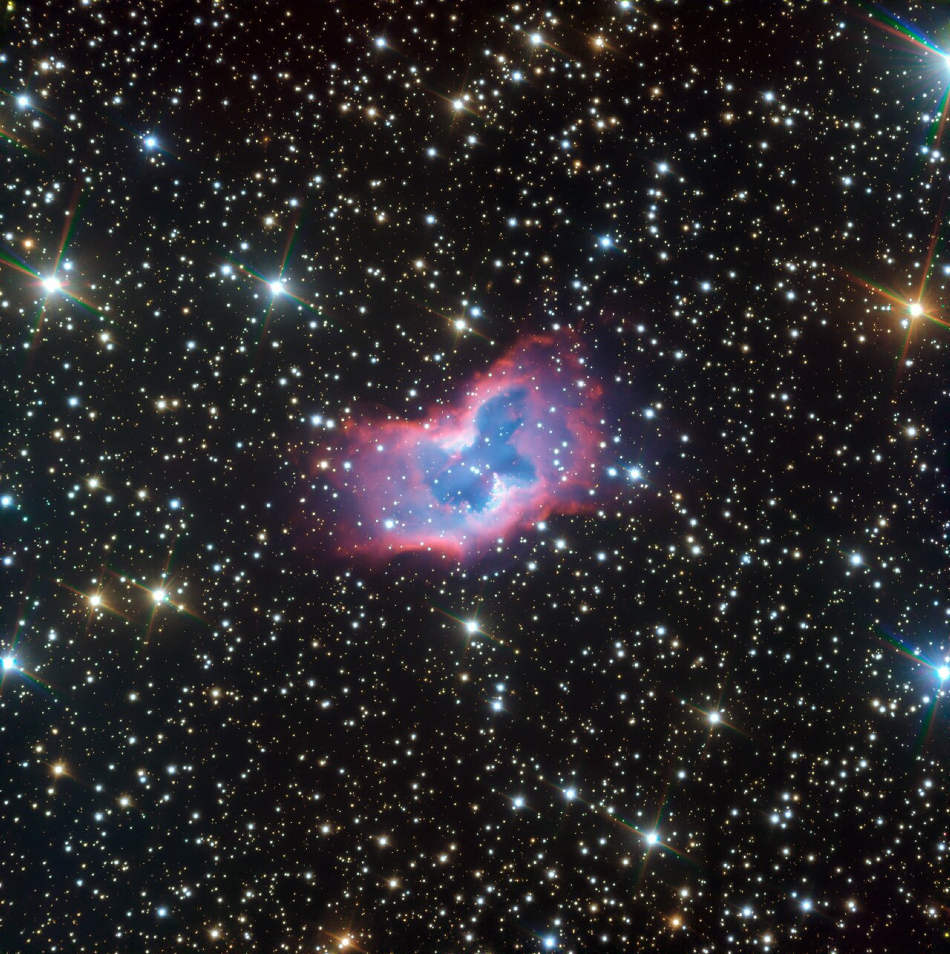Jul 31 2020
ESO’s Very Large Telescope (VLT) has captured new, stunning images of a planetary nebula named NGC 2899—a striking bubble of gas that resembles a butterfly with its intricate patterns, beautiful colors, and symmetrical structure and appears to float and flutter across the sky.
 This highly detailed image of the fantastic NGC 2899 planetary nebula was captured using the FORS instrument on ESO’s Very Large Telescope in northern Chile. This object has never before been imaged in such striking detail, with even the faint outer edges of the planetary nebula glowing over the background stars. Image Credit: ESO.
This highly detailed image of the fantastic NGC 2899 planetary nebula was captured using the FORS instrument on ESO’s Very Large Telescope in northern Chile. This object has never before been imaged in such striking detail, with even the faint outer edges of the planetary nebula glowing over the background stars. Image Credit: ESO.
NGC 2899 has never been imaged in such brilliant detail earlier. The images show even its faint outer edges glowing over the background stars.
Enormous swathes of gas of the planetary nebula extend up to about two light-years from its center, which glow very bright in front of the stars of the Milky Way as the temperature of the gas reaches more than 10,000 degrees.
The high temperatures are caused by the enormous amount of radiation emitted from the parent star of the nebula, which makes the hydrogen gas in the nebula to glow in a reddish halo around the oxygen gas, which glows blue.
Located in the Southern constellation of Vela (The Sails) between 3000 and 6500 light-years away from the Earth, the NGC 2899 nebula includes two central stars. It is considered that these stars give the nebula its almost symmetric appearance.
One of the stars reached the end of its life and shed its outer layers, while the other one has been interfering with the gas flow now, thus contributing to the two-lobed shape evident from the images. Only around 10%–20% of planetary nebulae exhibit a bipolar shape of this type.
Astronomers could take such a detailed image of NGC 2899 with the help of the FOcal Reducer and low dispersion Spectrograph instrument, or FORS for short, fitted on UT1 (Antu), which is one of the four 8.2-m telescopes that constitute ESO’s VLT in Chile.
The FORS is a high-resolution instrument and one of the first ones to be fitted on ESO’s VLT. It has been employed to capture several beautiful images and has helped perform various discoveries from ESO.
FORS has been useful for observations of light from a gravitational wave source, has helped study the first-ever interstellar asteroid to be observed, and has been used to perform an in-depth investigation of the physics behind the formation of complex planetary nebulae.
The image above was captured under the ESO Cosmic Gems program, an outreach project for producing images of intriguing, interesting, or visually brilliant objects with the help of ESO telescopes, for applications to education and public outreach.
The program involves using telescope time that cannot be used for scientific observations. All data gathered as part of the program may also be applicable for scientific purposes, and are made accessible for astronomers through the science archive of the ESO.
Source: https://www.eso.org/public/